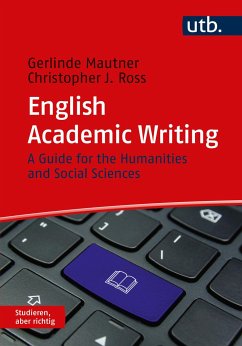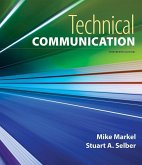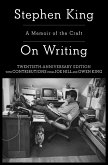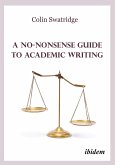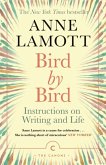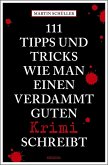Gerlinde Mautner, Christopher J. Ross
English Academic Writing
A Guide for the Humanities and Social Sciences
Gerlinde Mautner, Christopher J. Ross
English Academic Writing
A Guide for the Humanities and Social Sciences
- Broschiertes Buch
- Merkliste
- Auf die Merkliste
- Bewerten Bewerten
- Teilen
- Produkt teilen
- Produkterinnerung
- Produkterinnerung
Das Buch richtet sich an all jene, die in Studium oder Beruf wissenschaftliche Texte auf Englisch verfassen wollen und dafür praxisorientierte Hilfe suchen. Es enthält eine Vielzahl von sprachlichen Tipps, authentischen Beispielen, Zusammenfassungen und eine Phrasensammlung.
Andere Kunden interessierten sich auch für
![Technical Communication Technical Communication]() Mike MarkelTechnical Communication201,99 €
Mike MarkelTechnical Communication201,99 €![On Writing On Writing]() Stephen KingOn Writing15,99 €
Stephen KingOn Writing15,99 €![A No-Nonsense Guide to Academic Writing A No-Nonsense Guide to Academic Writing]() Colin SwatridgeA No-Nonsense Guide to Academic Writing14,90 €
Colin SwatridgeA No-Nonsense Guide to Academic Writing14,90 €![Wissenschaftlich Arbeiten für Vielbeschäftigte Wissenschaftlich Arbeiten für Vielbeschäftigte]() Petra HeidlerWissenschaftlich Arbeiten für Vielbeschäftigte20,90 €
Petra HeidlerWissenschaftlich Arbeiten für Vielbeschäftigte20,90 €![Bird by Bird Bird by Bird]() Anne LamottBird by Bird18,99 €
Anne LamottBird by Bird18,99 €![Wissenschaftliche Bilder: gut gestalten, richtig verwenden Wissenschaftliche Bilder: gut gestalten, richtig verwenden]() Steffen-Peter BallstaedtWissenschaftliche Bilder: gut gestalten, richtig verwenden29,90 €
Steffen-Peter BallstaedtWissenschaftliche Bilder: gut gestalten, richtig verwenden29,90 €![111 Tipps und Tricks, wie man einen verdammt guten Krimi schreibt 111 Tipps und Tricks, wie man einen verdammt guten Krimi schreibt]() Martin Schüller111 Tipps und Tricks, wie man einen verdammt guten Krimi schreibt16,95 €
Martin Schüller111 Tipps und Tricks, wie man einen verdammt guten Krimi schreibt16,95 €-
-
-
Das Buch richtet sich an all jene, die in Studium oder Beruf wissenschaftliche Texte auf Englisch verfassen wollen und dafür praxisorientierte Hilfe suchen. Es enthält eine Vielzahl von sprachlichen Tipps, authentischen Beispielen, Zusammenfassungen und eine Phrasensammlung.
Produktdetails
- Produktdetails
- Studieren, aber richtig
- Verlag: UTB / UVK
- Seitenzahl: 238
- Erscheinungstermin: 19. Juni 2023
- Englisch
- Abmessung: 216mm x 152mm x 17mm
- Gewicht: 360g
- ISBN-13: 9783825260286
- ISBN-10: 3825260283
- Artikelnr.: 66388679
- Herstellerkennzeichnung
- UTB GmbH
- Industriestraße 2
- 70565 Stuttgart
- Studieren, aber richtig
- Verlag: UTB / UVK
- Seitenzahl: 238
- Erscheinungstermin: 19. Juni 2023
- Englisch
- Abmessung: 216mm x 152mm x 17mm
- Gewicht: 360g
- ISBN-13: 9783825260286
- ISBN-10: 3825260283
- Artikelnr.: 66388679
- Herstellerkennzeichnung
- UTB GmbH
- Industriestraße 2
- 70565 Stuttgart
Dr. Gerlinde Mautner lehrt am Insitut für Englische Wirtschaftskommunikation der Wirtschaftsuniversität Wien.
AcknowledgmentsExplanatory notes for readersIntroduction: Seven pillars of academic writing1 Creativity and constraints: Planning research texts1.1 Research genres1.1.1 Genres, structures and hierarchies1.1.2 Hierarchical organisation in research texts1.2 The research story and its parts1.2.1 The abstract1.2.2 The beginning: Setting the scene1.2.3 The middle: Developing the plot1.2.4 The ending: Rounding it all off1.3 Text appeal2 One step at a time: Designing paragraphs2.1 The essence of English paragraphs2.2 The components of a paragraph2.2.1 The topic sentence2.2.2 The 'meaty' middle2.2.3 The final sentence2.3 Paragraph appeal3 Focus and flow: Constructing sentences3.1 Sentence types3.1.1 The simple sentence3.1.2 The complex sentence3.1.3 Subordinate clauses3.2 Principles of sentence construction3.2.1 The 'given-new' principle3.2.2 End focus3.3 Passive sentences3.4 Sentence appeal3.4.1 Getting the verb-noun balance right3.4.2 Varying sentence structure4 Breath marks: Punctuation4.1 Why punctuation matters4.2 What punctuation marks signal4.2.1 Suggesting 'stops'4.2.2 Suggesting 'detours'4.2.3 Suggesting 'pauses'4.3 Commas: sometimes a question of style4.3.1 Where style plays little part4.3.2 Where style comes in5 Only connect: Cohesion5.1 General principles of cohesion and coherence5.2 Cohesion within paragraphs5.2.1 Semantic chains5.2.2 Pronouns5.2.3 Linkers5.2.4 Structural devices5.3 Cohesion beyond the paragraph6 Your words, not mine: Citations6.1 What to cite and how much6.2 Types of citations6.2.1 Direct versus indirect citations6.2.2 Integral versus non-integral citations6.3 Weaving citations into the text6.4 Inadvertent plagiarism and how to avoid it7 Follow me: Guiding and persuading the reader7.1 Showing the reader the way: Metacomments7.2 Getting the reader on your side7.2.1 Reasoning7.2.2 Emphasising7.2.3 Evaluating7.2.4 Rapport-buildingAppendix 1 Conference presentationsA1.1 The audience, or 'pity the listener'A1.2 The purposesA1.3 Language considerationsA1.4 Text slidesAppendix 2 Grant proposalsAppendix 3 Phrasebank for academic writingList of referencesIndex
AcknowledgmentsExplanatory notes for readersIntroduction: Seven pillars of academic writing1 Creativity and constraints: Planning research texts1.1 Research genres1.1.1 Genres, structures and hierarchies1.1.2 Hierarchical organisation in research texts1.2 The research story and its parts1.2.1 The abstract1.2.2 The beginning: Setting the scene1.2.3 The middle: Developing the plot1.2.4 The ending: Rounding it all off1.3 Text appeal2 One step at a time: Designing paragraphs2.1 The essence of English paragraphs2.2 The components of a paragraph2.2.1 The topic sentence2.2.2 The 'meaty' middle2.2.3 The final sentence2.3 Paragraph appeal3 Focus and flow: Constructing sentences3.1 Sentence types3.1.1 The simple sentence3.1.2 The complex sentence3.1.3 Subordinate clauses3.2 Principles of sentence construction3.2.1 The 'given-new' principle3.2.2 End focus3.3 Passive sentences3.4 Sentence appeal3.4.1 Getting the verb-noun balance right3.4.2 Varying sentence structure4 Breath marks: Punctuation4.1 Why punctuation matters4.2 What punctuation marks signal4.2.1 Suggesting 'stops'4.2.2 Suggesting 'detours'4.2.3 Suggesting 'pauses'4.3 Commas: sometimes a question of style4.3.1 Where style plays little part4.3.2 Where style comes in5 Only connect: Cohesion5.1 General principles of cohesion and coherence5.2 Cohesion within paragraphs5.2.1 Semantic chains5.2.2 Pronouns5.2.3 Linkers5.2.4 Structural devices5.3 Cohesion beyond the paragraph6 Your words, not mine: Citations6.1 What to cite and how much6.2 Types of citations6.2.1 Direct versus indirect citations6.2.2 Integral versus non-integral citations6.3 Weaving citations into the text6.4 Inadvertent plagiarism and how to avoid it7 Follow me: Guiding and persuading the reader7.1 Showing the reader the way: Metacomments7.2 Getting the reader on your side7.2.1 Reasoning7.2.2 Emphasising7.2.3 Evaluating7.2.4 Rapport-buildingAppendix 1 Conference presentationsA1.1 The audience, or 'pity the listener'A1.2 The purposesA1.3 Language considerationsA1.4 Text slidesAppendix 2 Grant proposalsAppendix 3 Phrasebank for academic writingList of referencesIndex

